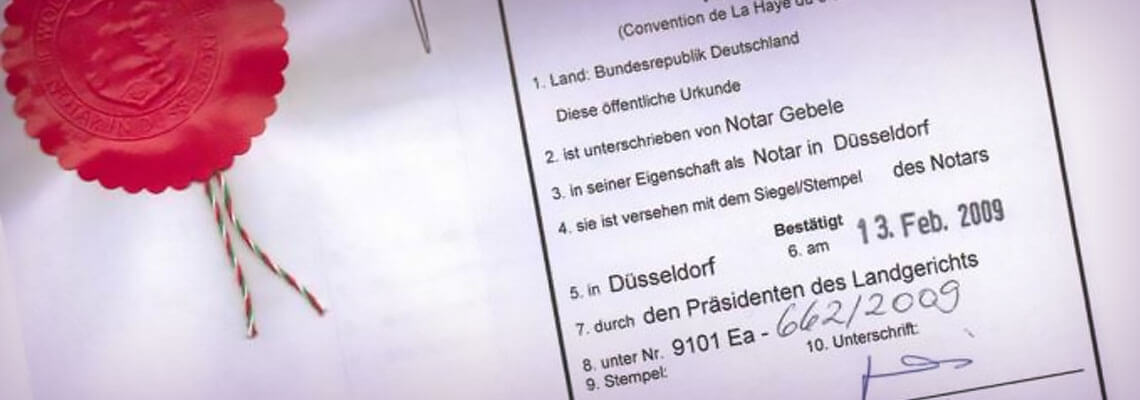Apostille is a method of legalizing documents and confirming their validity for legal use in a foreign state. The Hague Convention of May 5, 1961 became the law governing legalization by means of Apostille. The Hague Convention stipulates that the signatory states have the right to use a simplified procedure for legalizing documentation using an Apostille stamp.
An Apostille appearance
An Apostille appearance
Apostille can be affixed as a seal or stamp. Besides, its types can be as follows:
- Coloured ribbon;
- Embossed seal or rubber stamp;
- Sticker;
- Glue.
Sometimes an Apostille can be placed not on the document, but on special paper attached to its original. If an Apostille differs from the generally accepted sample, there may be problems with the legality of the document. Such papers are likely to be invalidated.
Apostille content
The first line of the stamp is the title. It always has the inscription “APOSTILLE” and remains unchanged. The next field is the place where the country that put the stamp is indicated. Then the place of apostillation is indicated, namely: city, date, name of the department that put the stamp. The full name of the employee who affixed the Apostille shall be entered in the line “has been signed by”, together with his/her signature. Next, the serial number shall be indicated and the stamp of the organization that carries out the apostillation shall be put.
Features of a document certification
The official documents that the Convention specifies as requiring an Apostille are as follows:
- Documentation issued by public institutions, which also includes executive acts and documents drawn up by the prosecutor's office;
- Administrative information and certificates;
- Notarized documents;
- Academic credentials and extract from the archives.
Based on the rules of the Convention, the following documents are not subject to apostillation:
- Consular and diplomatic acts;
- Unofficial documents;
- Damaged or illegible documentation;
- Identity cards;
- Commercial or customs documents.
An Apostille can also be placed on notarized copies of documents.
Special features of the process
Apostillation of documentation usually lasts 2-3 hours. If the document is non-standard, this period may increase to 1-2 days. Sometimes it happens so that a document has an unapproved form; then a specialist has to study of its original thoroughly with its subsequent apostillation. This can take a month.
Except for the main document requiring an Apostille affixing, the organization must provide:
- Passport;
- Stamp duty payment receipt;
- Application by sample.
Where and what documents should be certified
The Ministry of Justice (the State Registration Service as one of the divisions of the Ministry of Justice) Ministry of Education and Ministry of Foreign Affairs of Ukraine carry out apostillation of documentation. Some papers shall first be notarized. The Apostille can be affixed:
- In the Ministry of Justice – for certificates of birth, marriage, etc.;
- In the Ministry of Education – for diplomas, certificates of education, certificates of study;
- In the Ministry of Defence – for certificates of good conduct issued by the Ministry of Internal Affairs of Ukraine, documents issued by the Ministry of Health of Ukraine, etc.
The prosecution or internal affairs bodies can affix Apostille if the documents relate directly to these departments.
The legalization of documents is a difficult process to make sense out of on your own. It will be easier to turn to a private organization that will affix the Apostilles quickly and efficiently. Of course, it will be more expensive, but you will be sure you have followed all the rules and saved your time.



